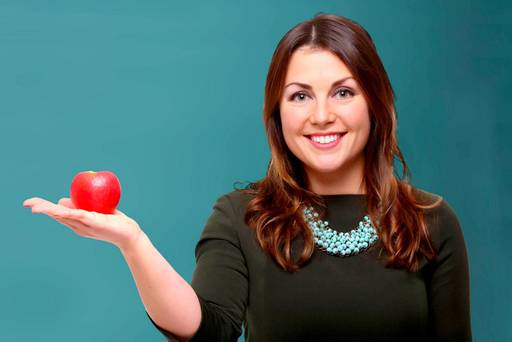
The belief is that meat and sugar consumption needs to half by 2050 to restrict damage to the environment posed by three billion people who are either eating too much or too little.
The diet is extreme, there are no two ways about it.
The majority of Irish people are not managing the current guidelines on wholegrain plants.
Therefore, how can Irish people be expected to base their diet, nearly exclusively, on plants?
The average person hasn’t reduced sugar enough, so to ask them to do this diet and a multitude of things on top, is unrealistic.
I don’t think most people could stick to this diet.
Yes, there are lots of benefits to plant-based diets but I wouldn’t be in favour of the amount of restrictions here.
An unhealthy diet does exist but there is no such thing as an unhealthy food.
For example, as a dietitian, I wouldn’t suggest these extreme rations of red meat to everybody. Every body is created differently and each person has a unique set of values. Therefore, one size does not fit all.
Encouraging all people to weigh food may sound healthy, but it could lead to an unhealthy relationship with food as it turns food into numbers. It’s restrictive and unrealistic.
The ‘Food in the Anthropocene’ report diet relates to the next three decades, which health experts state is a period when humans will dominate and influence climate and our environment.
Under the new regime, adults would be limited to 14g of red meat a day, equivalent to half a rasher of bacon, and benefit from no more than 30 calories from it.
The diet recommends no more than 29g of daily poultry, around one and a half chicken nuggets, and 13g of eggs. The diet could lead to inadequate protein intake, across the day, and at individual meals.
If a person wishes to cut meat out of their diet, that is fine, but oily fish, which provides omega 3 fats EPA and DHA, is essential.
The report recommends reducing fish intake to just 40 calories per day and cutting chicken down to one ounce.
It is possible to eat enough protein on a plant-based diet, but education on achieving this is required.
While younger people can start to stimulate their muscles to grow and repair with 10g of protein per meal, older people need 20g per meal.
However, ideally younger people would eat 20g of protein at a meal and older people would eat 40g at a meal, as this would stimulate their muscles to the max.
Eating enough protein at meal times is a crucial step in preserving muscle mass during the aging process.
I’ve seen a menu based on the sustainable diet they suggest today, with a lot of examples of smoothies and meals that do not meet these protein targets.
Even if you have smoothies with nut butter and nut milk, there’s still not enough protein in it.
On a whole, people don’t have the level of skills to cook this diet either, making it a challenge to implement.
Furthermore, if you cut out foods or entire food groups from your diet, you leave behind huge nutrient gaps.
In terms of omega-3s, EPAs and DHAs are fats only found in oily fish and algae. If you cut out these foods, our bodies can’t make them and you’re leaving a nutritional gap and that will cause problems in both the long and short term.
Omega-3s are required to keep our brain and eyes healthy, to reduce heart disease and inflammation.
As there’s a multitude of roles for omega 3 within the body, you can’t be healthy without it.
Orla Walsh is a nutritionist with the Dublin Nutrition Centre
Orla Walsh’s sustainable seven-day diet plan
Monday
Breakfast: Wholegrain bread with peanut butter and banana. Soya latte.
Lunch: Three-bean salad with vegetables and tahini dressing.
Dinner: Tofu stir-fry with brown rice.
Tuesday
Breakfast: Porridge made on oats and soya milk. Top with flaxseed and fruit.
Lunch: Beans on toast with a side of mushrooms and tomatoes.
Dinner: Quinoa and Dhal.
Wednesday
Breakfast: Oats, soya milk, soya yoghurt, chia seed and strawberries.
Lunch: Wrap with chickpea scramble, hummus, spinach and avocado.
Dinner: Soya mince chilli and bulgur wheat.
Thursday
Breakfast: Smoothie made with hemp milk, hemp seeds, strawberries, frozen banana and vanilla pod.
Lunch: Salad with quinoa, edamame beans, mint, leaves, pistachio and a soya yoghurt dressing.
Dinner: Vegetarian burrito with tomato salsa, green pea guacamole and black beans.
Friday
Breakfast: Porridge made from quinoa and soya milk, topped with pear, raspberries and almond flakes.
Lunch: Pita with falafel, hummus and salad.
Dinner: Tempeh with mango and lime noodles (includes chilli, ginger, sesame oil and tamari).
Saturday
Breakfast: High protein quinoa bread with almond butter and chia jam.
Lunch: Veggie burgers in a Turkish flatbread with tapenade and roasted broccoli and cauliflower.
Dinner: Lentil pasta with a tomato-based sauce.
Sunday
Breakfast: Pineapple, kiwi, soya yoghurt, with lentil granola.
Lunch: Porridge bread with hummus and soup.
Dinner: Tofu with a satay sauce, stir fry vegetables and buckwheat.
Irish Independent
